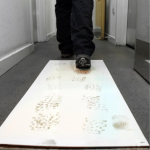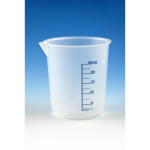Analysis Note
Agglutination activity is expressed in µg/mL and is determined from serial dilutions of a 1 mg/mL solution using phosphate buffered saline, pH 6.8, containing, for each lectin, calcium, magnesium, and manganese at different concentrations. This activity is the lowest concentration to agglutinate a 2% suspension of appropriate erythrocytes after 1 hr incubation at 25 °C.
Application
Lectin from Bandeiraea simplicifolia (Griffonia simplicifolia) has been used for immunohistochemistry and immunofluorescence staining.
Biochem/physiol Actions
BS-I has a major affinity for terminal α-D-galactosyl residues with a secondary affinity for terminal N-acetyl-α-D-galactosaminyl residues.
Lectin from Bandeiraea simplicifolia (Griffonia simplicifolia) agglutinates human blood group A and B cells. It is specific for ?GalNAc- and ?Gal. It acts as a reagent for the detection of this ?Gal epitope in biological materials. Lectin from Bandeiraea simplicifolia is used as a marker for xenoreactive antigen (?Gal1?3Gal) and cancer. Lectin plays an important role in fertilization, embryogenesis, inflammation, metastasis and host-parasite recognition.
General description
Lectin from Bandeiraea simplicifolia (Griffonia simplicifolia) has A and B subunits, which recognizes ?GalNAc and ?Gal-end groups respectively. Lectins are extracted from the seeds of the legume shrub Griffonia simplicifolia, which are carbohydrate binding proteins.
Other Notes
BS-I is a tetrameric lectin consisting of two types of subunits designated A and B. There are five BS-I isolectins with different subunit composition: BSI-B4, BSI-AB3, BSI-A2B2, BSI-A3B and BSI-A4. BSI-B4 is blood group B specific and has an exclusive affinity for terminal α-D-galactosyl residues, whereas BSI-A4 has blood group A specificity and has a major affinity for terminal N-acetyl-α-D-galactosaminyl residues.
Packaging
0.2, 1 mg in serum bottle
Physical form
Contains citrate buffer salts and calcium chloride









